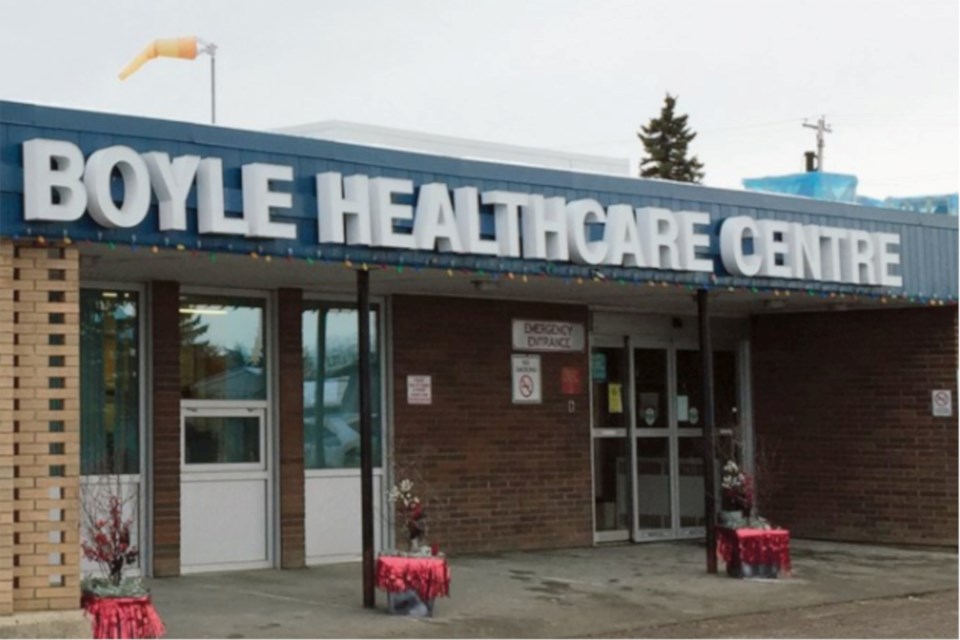BOYLE — A decade of not having enough paramedics is leading to a situation that's going to need an emergency response of its own very soon, as evidenced by numerous recent issues throughout the region including a 150 km trip for one ambulance from Barrhead to Boyle on Halloween night, warns the first responders union.
On Aug. 28, the Health Sciences Association of Alberta (HSAA) launched the HSAA EMS Facebook page to give Albertans a heads up about ambulance availability and this past week indicated an ambulance from Barrhead was called to attend to an incident near Boyle, something HSAA president Mike Parker says is becoming all too common.
“This kind of unacceptable response time is happening more and more throughout Alberta,” he said in an e-mail Nov. 5. “Over a 50-day period the HSAA EMS Facebook page highlighted more than 20 incidents (across Alberta) where the response time exceeded 60 minutes.”
Asked why it is happening, Parker said to ask Alberta Health Services (AHS), who did not respond to repeated requests before press time.
“That’s a question for AHS because they would have all the details, but we do know that on Oct. 31 an ambulance was dropped from the schedule in Boyle, Cold Lake, Lac la Biche, Vilna and Westlock due to lack of paramedics to staff them,” he said.
In an early October e-mail to the Barrhead Leader regarding issues with ambulance services there, AHS noted the province has seen an advanced call volume over the last several months due to several factors, including the pandemic and emergency calls related to people returning to pre-pandemic activities.
"All call types have increased and staff illness and fatigue are also contributing to challenges in the EMS system."
The e-mail also stated the province is working on filling 100 additional EMS positions, is bringing on additional staff to help deal with the increased call volume and are offering overtime to willing staff.
AHS contracts Associated Ambulance to provide ambulance service throughout the Town and Country area.
The Barrhead Leader also spoke to Associated Ambulance executive director of operations Paul Kennedy at that time.
"There are probably 50 ambulances in the province not on the road today alone because of staffing issues," he said. "It is not a rural, direct delivery (AHS controlled ambulances), or a contract issue. It is a provincewide problem, and the system needs a massive overhaul to make things better."
Kennedy also said Associated Ambulance, as a company, has been “pushing” AHS and the province for changes.
"What we are dealing with now is 19 months of people (paramedics) being sick and tired of being abused by patients, and everyone under the sun, under very stressful conditions," he said.
A one-way drive from Barrhead to Boyle is one hour and 36 minutes in good conditions, leeching precious minutes away from being able to save a life, let alone the mental, physical, and emotional toll it takes on family members or a passerby who stops to help, Parker said.
“Time is the enemy when responding to an emergency call. The longer a person waits for care the worse their ability to recover, or even survive, becomes. These are emergencies,” he said. “These are people, our loved ones, and neighbours, who are suffering strokes, heart attacks or catastrophic injuries in crashes. Imagine the toll it takes on someone who knows they need immediate medical attention as the minutes continue to tick by.”
It is also detrimental to the mental health of the first responders, he noted.
“I can tell you considerable damage is being done to paramedics who are dealing with the stress of driving (with) lights and sirens for an hour or more to a call. I can also tell you knowing it’s taking that long to get to someone who needs you is devastating for our mental well-being,” he said. “Every time an ambulance is dropped the coverage area for the remaining ambulances in neighbouring areas increases."
HSAA is also calling upon AHS to start informing the public, instead of relying on the union, who relies on members to self-identify when an ambulance is downgraded from advanced to basic life support or when there will be no coverage.
According to the HSAA, between Aug. 28 and Nov. 7 there was no Barrhead ambulance 10 times and it was downgraded from advanced life support (ALS) to basic life support (BLS) seven times. Athabasca was without service four times and had to respond to a call in Wabasca Sept. 12, over one hour and 45 minutes one way. Westlock was without an ambulance four times, and Boyle had no ambulance eight times.
In a text message Nov. 5 Village of Boyle mayor Colin Derko expressed dismay they were not informed in advance by AHS and described the incident as "scary."
“Yikes! This is so not good,” said Derko. “Yes, I am very concerned and I can assure you that we will be trying to find out if there is anything we can do to help so that this stops happening. Scary.”
He added the topic is already on the agenda for the Nov. 10 meeting.
“We are going to be discussing this at our upcoming council meeting and hopefully we can get more accurate information at that time,” he said. “I am digging into it because we are definitely concerned if anything to do with health services is being stressed.”
With files from Barry Kerton



